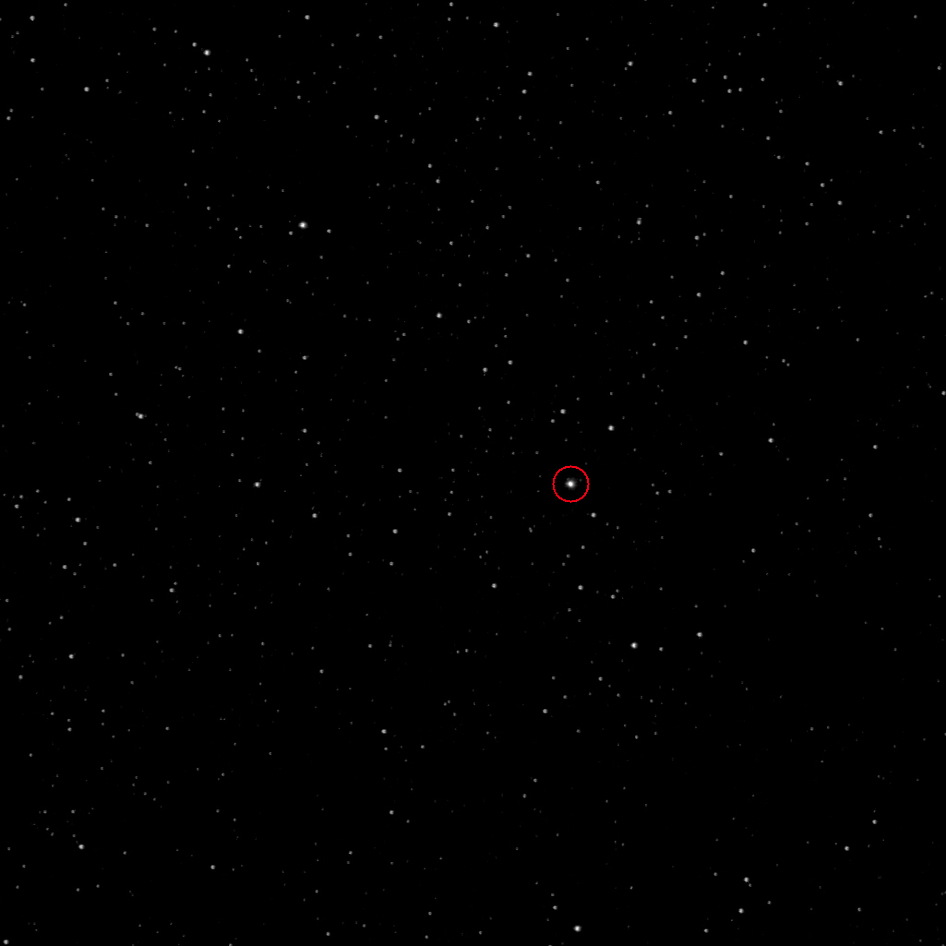Rosetta Probe Sees Target Comet Quiet Down (Photo)

The comet targeted by a European spacecraft has calmed considerably, just as the probe's chase enters the home stretch.
Comet 67P/Churyumov-Gerasimenko, with which the European Space Agency's Rosetta probe will rendezvous in early August, sported a big dust cloud around its core in April and May. But photos taken by Rosetta's scientific camera on June 4 show no signs of such activity, and other observations reveal that the comet's brightness has dropped off as well, researchers said.
"The comet is now almost within our reach — and teaching us to expect the unexpected," the camera's principal investigator, Holger Sierks of the Max Planck Institute for Solar System Research in Germany, said in a statement. "After its onset of activity at the end of April, our images are currently showing a comet back at rest." [Photos: Europe's Rosetta Comet Mission in Pictures]
Comets tend to brighten and increase in activity when they approach the sun and warm up, as Comet 67P/Churyumov-Gerasimenko is doing now. But the icy objects are notoriously unpredictable, as 67P's current behavior demonstrates.
Rosetta lauched in March 2004, beginning a long and looping trip to Comet 67P/Churyumov-Gerasimenko, which is about 2.5 miles (4 km) wide. Researchers woke the probe up this past January to prepare it for the upcoming rendezvous, ending a record 957 days of deep-space hibernation.
The spacecraft's epic journey is almost over. Rosetta was 267,000 miles (430,000 km) from the comet when it snapped the photos on June 4, and the probe is about 102,500 miles (165,000 km) away now, researchers said. (For comparison, the moon orbits Earth at an average distance of 239,000 miles, or 384,600 km).
Rosetta will meet up with 67P/Churyumov-Gerasimenko in early August, then drop a lander called Philae onto the comet in November. If all goes according to plan, Philae will capture the first-ever images from the surface of a comet and drill into 67P to collect samples, which will reveal a great deal about the comet's composition.
Breaking space news, the latest updates on rocket launches, skywatching events and more!
The mission should give scientists an unprecedented up-close look at a comet and help them understand how the icy bodies change as they zoom close to the sun, researchers said.
The data are already pouring in, as Rosetta's science instruments are back in action after the probe's long hibernation.
"It's great to have started regularly receiving science data, especially after a long, 10-year journey towards our destination," said Matt Taylor, the European Space Agency's Rosetta project scientist. "The variable activity of the comet shows it definitely has personality, which makes us all the more eager to get there to learn just how it ticks."
The Rosetta mission, whose total cost is 1.3 billion euros ($1.77 billion at current exchange rates), is slated to end in December 2015.
Follow Mike Wall on Twitter @michaeldwall and Google+. Follow us @Spacedotcom, Facebook or Google+. Originally published on Space.com.

Michael Wall is a Senior Space Writer with Space.com and joined the team in 2010. He primarily covers exoplanets, spaceflight and military space, but has been known to dabble in the space art beat. His book about the search for alien life, "Out There," was published on Nov. 13, 2018. Before becoming a science writer, Michael worked as a herpetologist and wildlife biologist. He has a Ph.D. in evolutionary biology from the University of Sydney, Australia, a bachelor's degree from the University of Arizona, and a graduate certificate in science writing from the University of California, Santa Cruz. To find out what his latest project is, you can follow Michael on Twitter.
